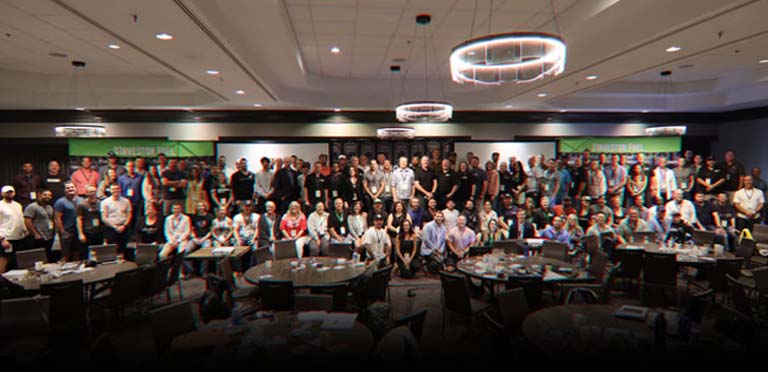
Show Summary
In this conversation, Mark Hill shares his journey into the real estate and construction industry, particularly focusing on church construction and cosmetic flips. He discusses the unique challenges and opportunities in church property valuation, the importance of understanding market expectations, and the niche of cosmetic renovations in residential real estate. Mark emphasizes the need for strategic planning and realistic pricing in both church and residential property markets, providing insights into how to effectively navigate these spaces.
Resources and Links from this show:
-
Listen to the Audio Version of this Episode
Investor Fuel Show Transcript:
Mark Hill (00:00)
Yeah, and here in the central Texas area, we have a lot more sellers than we do buyers. So the competition is way high on a home. So we kind of do two things. Number one, we do make ready for a house. So let’s say you have a house that was built in the 90s and you painted it 10 years ago and you know, it needs a little bit of up sale to get it done. Like you mentioned for kitchen and bathrooms, we go in and do that. What our niche is, is we can get that done in a week or two.We’re not a huge construction company. We’re not out, you know, six months. And right now the new home market is so strong right now that if construction trades, it’s really hard to get someone consistent on the flip. And so we work very hard on timing because we understand the longer it takes, the less money you’re making, whether it’s for apartments or whether it’s for flipping a house.
Dylan Silver (02:29)
Hey folks, welcome back to the show. Today’s guest is based in the Greater Austin area and his company H2 Property Pros. It is really a light handyman and flip service for folks in the area with light cosmetic rehab. Please welcome Mark Hill. Mark, welcome to the show.Mark Hill (02:51)
Thank you, it’s good to be here.Dylan Silver (02:53)
It’s great to have you on here. And I always like to start off at the top by asking guests how they got into the real estate space.Mark Hill (03:01)
It’s kind of a neat story. My dad was a pastor and his jobbuilding churches. And so I kind of got into the construction, helping him build several small churches, liked it, and then flipped a couple of houses myself and saw some pain points and thought maybe I can do a better job at fixing some of the pain points and helping people out than I did doing the flips. And so I got involved doing that.
Dylan Silver (03:29)
I want to ask you about the construction of churches, because right now new construction is very big all across the country, in Texas, but all across the country. But I can imagine that ⁓ before new construction was as popular as it is now, the construction space for churches, you might have had to go to a specific person to build the church. It’s not just everybody who could put up a church. ⁓Back at that point in time, was there specific people that would be putting up many of the churches? Were individual congregations responsible for that type of work? How did people build churches by and large?
Mark Hill (04:07)
It’s still kind of the same way. It all depends on your budget. A smaller church most of the time is going to end up being their own general contractor or have somebody that is their own general contractor. And then once you get up probably above a million dollars, which is not much money these days, but once you get above a church, it probably seats more than 200. You’re probably going to go to a professional general contractor. And then once you get above the $5 million range, there are several companies.in America that are specifically designed just for church building. In fact, I was a consultant for an architectural design build firm in Chicago called Church Building Consultants. That’s all they did was around the country. There’s another one called Brown. There’s another one out in Utah. I can’t remember the name of it. once you get into the five to 25 Prestonwood, Baptist in Dallas actually was the largest
church construction. was 120 some million.
But once you get above the five million, you’re probably going to a specific builder.
Dylan Silver (05:52)
Hope.I wanna ask you about this space. It’s interesting, you’re the first person, hundreds of guests, you’re the first person that I’ve talked to about church construction. Of course, Texas, things are bigger, right? So you have larger churches, but also you’ll have so many different kinds of churches. And now there’s a very, I see a big push towards modernizing. And this is not just in Texas as well, but across the country. So there’s different kinds of demands that you’ll have, but then also too,
Smaller churches they they in many ways need to I don’t want to say compete but there’s some of that There’s some of that element to it where they’re saying well, we have larger churches that can do so much They’re offering this and this so we need to offer a little bit of that as well our individual congregations Hiring out some of this, you know design work Do they have the the people in place many of the time to do this or is it really case by case and each church is different?
Mark Hill (06:53)
I’d say it’s case by case, but you’re seeing a lot of what you just described happen. I’ve spent about 20 years in that space. I’ve probably done about 60 churches across the southeast. And we’ve done them all the way from 50 people up to probably 2000. One of the reasons why that you’re seeing that is because there really is a two pushes in church that’s kind of driving the construction side of it. Number one isA lot of people are going to multiple services and that’s simply a financial thing. When you go to a multiple service, you’re probably getting about 85 % what you would consider a profit. I know that’s a weird term to use for churches, but that’s what it is because you already have an economy of scale of paying that. And then number two, on a smaller church, you can take $100,000 and look like you did $500,000 worth of work. You flip out the chairs, the carpet.
paint the ceiling, put in lights, redo the stage, new sound system. I just did a small church north of Memphis, painted the outside. It cost $600 in paint, and about two days with the work, church had about $2,500 in it, looked like a brand new facility. It was an old building built in the 60s, and now with bright white trim and a very beautiful blue color to the brick, it’s very modernized.
Dylan Silver (08:07)
Yeah.I wanna ask you maybe a niche question about church flips. As a realtor, but also as someone myself who’s worked a lot in distressed real estate and with investors, you talk about kitchens and bathrooms. You talk about maybe some appliances, if you’re gonna sell the home with appliances, to give it a facelift and really make the home pop. But you don’t have to necessarily do a roof to studs flip of everything. But the kitchen and bathrooms tends to be what sells the home.
For a church, is there anything similar?
Mark Hill (08:48)
Yes, it’s completely different, but it’s very similar in concept. You cannot sell a church building for more than what the congregation moving in can afford it. I worked with a client several years ago in Joliet. They had a four acre corner, Joliet, Illinois. They had a four acre corner on a major secondary road and CVS had come in and offered them $5 million for that corner. So they thought they could sell that propertyfor four to four and a half million dollars to a church. The problem was it only seat 200 people. The city shut down the sale to CVS. They didn’t want a commercial on that property. And so they had had it listed for three years when I got involved in the picture. They had it listed when I got there for 3.8, had not had anything. Everybody came and I told the pastor and then with the board that was over and I said, the problem is you’ve outpriced.
who can afford, who’s gonna buy this building? Who’s gonna buy this building is at the most 350 people. They can afford about a million and a half to $2 million. What you’re asking for the property is a church that could seat a thousand,
Dylan Silver (09:50)
Right.Mark Hill (10:37)
but you don’t, you only seat 200. And so going to two services, it’s 350. So I went through the numbers, reprogrammed them in 15 days, had a buyer and sold.Dylan Silver (10:49)
Wow, ⁓ this is interesting for me. So I wanna pivot a bit here, Mark. So you’re also involved in consulting as far as price points with churches and hey, what’s the exit strategy here? How often is it in that side of the business that folks are coming to you with kind of this, I don’t wanna say unrealistic, but maybe they’ve been given some type of offer at some point in time, whether it’s from a CVS or a private company, and so therefore they’re thinking, well, it’s gotta be worth more than,whatever these other people are telling me because CVS or this private equity firm offered me X.
Mark Hill (11:24)
Yeah, that’s pretty common. Here’s how I deal with that. I ask them, how many people do you run? And in about three minutes, I tell them what their budget is for the year. And they’re like, how did you know that? Did you look that? No, because that’s what numbers are. Numbers don’t lie. So if you’ve got this percentage and this and this, and that’s what it is. So let me ask you this question. If your budget’s $2 million a year, do you think you can afford a $12 million piece of property? No. Well, right now, you’re asking.$4 million for this piece of property, it’s only worth about $1.75. So whoever can afford $1.75 is who’s going to fit in your building.
Dylan Silver (12:02)
Very interesting, know, as a realtor myself, I can imagine the conversations that are had and kind of resetting expectations here, especially when people are selling a church. People talk about selling a home and how you have so much emotional attachment to it. Selling a church has gotta be another ball game entirely. I do wanna pivot a bit here and ask you about getting into the light rehab ⁓ TLC facelift, if you will, in the…residential space and then also what the scope of work that you do is in that space. We talked a little bit before the show about this. It’s interesting because this is a niche that’s I would say tangent to the fix and flip space. You could call it make ready, but it’s definitely needed because right now in Texas you can’t just put a home on the market that’s pre-owned and expect it to sell immediately, especially when folks are
competing with new home interest rates and brand new modern homes, those pre-owned homes are sitting.
Mark Hill (13:02)
Yeah, and here in the central Texas area, we have a lot more sellers than we do buyers. So the competition is way high on a home. So we kind of do two things. Number one, we do make ready for a house. So let’s say you have a house that was built in the 90s and you painted it 10 years ago and you know, it needs a little bit of up sale to get it done. Like you mentioned for kitchen and bathrooms, we go in and do that. What our niche is, is we can get that done in a week or two.We’re not a huge construction company. We’re not out, you know, six months. And right now the new home market is so strong right now that if construction trades, it’s really hard to get someone consistent on the flip. And so we work very hard on timing because we understand the longer it takes, the less money you’re making, whether it’s for apartments or whether it’s for flipping a house.
And so we’ll go in, do a deal.
Look it over give them an estimate and then say it will be done such-and-such day or you get a 10 % discount and So we we going in make it happen now. We’re not doing complete guts I don’t do that to me that opens up too many worms that I’m personally just not capable I don’t have the crew to handle but we can do the cosmetic flips I have a flooring they can buy at a reasonable place because of all my 25 years of contacts
all the things that needs to be done. I have a couple of very OCD carpenters who are really, really good at what they do. And so we’re able to work our way through that. So we do it on prepping for sale or if someone wants to flip, know, a lot of times you can either make $20,000 five times or you can try to make $100,000 one time.
In my opinion, a lot of times it’s easier to make the $20,000 five times because you have less chance
something going wrong. If you’re doing a $100,000 flip on a house, you’re probably taking it down to the studs and then you don’t know what you’re gonna find. It creates a little bit of a variable. And so we don’t really get into that. And there are people that are very good at it. I’m not saying that’s wrong. That’s just not our niche. We’re in that cosmetic flip. We’re gonna flip out the floors.
Dylan Silver (15:46)
Bye.Right?
Mark Hill (16:06)
Maybe the cabinets or paint the cabinets. Maybe help you get new countertops, put in new toilets, new tile, paint, ⁓ you know, just kind of some cosmetic and any repairs that need to be done in the house.Dylan Silver (16:19)
I can tell Mark, know, the way that you’re talking about the cosmetic flip space, you know, this is much needed. I haven’t actually put words to it and I haven’t had someone who’s doing what you’re doing on this show previously. Lots of flippers on the show, lots of people who buy really heavily distressed property, but this cosmetic flip space is needed on so many sides. On the side of sellers, on the side of investors. Like you said, would you rather do…$100,000 or $20,000 five times and manage your risk. I’m curious to get your perspective on what the general expectation is right now for buyers and sellers. I tend to think people think, know, I’m buying a new home, it’s already a large investment, it’s only getting more expensive. I don’t wanna have to think about, well, this is my starter home. As a realtor, sometimes we say that, this is your starter home.
But in a lot of ways, people are really thinking about, I’m gonna live here ⁓ maybe forever, but at least for a good long period of time. And I want everything to basically be new or like new.
Mark Hill (17:26)
Yeah, and one of the things that drives that Dylan that creates a problem for a first time buyer or a seller, especially is the ⁓ cost effectiveness of some of the starter brand new homes. ⁓ I live in Georgetown, Texas, and we’ve got 10 subdivisions around here you can move into for $250,000 brand new home. And so now it’s a three bedroom, two bath, 1400 square foot on a postage stamp lot.Dylan Silver (17:47)
Wow.Mark Hill (17:55)
but it’s all brand new. And so I think sometimes from the realtor perspective, you’ve got to set some good expectations. If you’re selling a three bedroom, two bath, 1400 square foot, small lot home that’s 35 years old, you’re either gonna have to drastically reduce your price or bring the house up to comparableness with a new home. Now, do I think that a home built in 1990 might be better than one built in 2025?Yeah, I think they use better lumber, know, all that stuff. But still as a first time home buyer, most times those people don’t know that. They don’t, and to explain it to them is like trying to speak French to an Italian guy. I mean, it’s just not gonna happen. They don’t understand no matter how well you explain it. So I do think there is, you do have to do some cosmetic things to make that home. Maybe you gotta put in new appliances. Maybe you gotta put in a new air conditioner. Maybe you’ve got a…
Dylan Silver (18:27)
You’re good.Thank
Mark Hill (18:51)
or have the air conditioner tested and have a report saying, hey, Bob’s air conditioner said, this is fine. And that way you’re able to compete at that $250,000 mark or whatever it is with that new home. Now, a lot of times, old homes, and I’m not trying to give a series on realtor, but you got to sell other things. You got to sell bigger trees, a bigger lot, a more established neighborhood.Dylan Silver (19:05)
You know, it’s.Yeah.
Mark Hill (19:16)
You know, all those things that when you go out here to this subdivision, they put up in the cow pasture, don’t have any ofDylan Silver (19:22)
No, that’s exactly right. And you mentioned the area, the neighborhood, there’s other points which can be appealing aside from the structure of the home itself. And you brought up a great point, which is, you know, that older home may actually be built better, stronger than the newer home, which can very well be true, especially with ⁓ some of the ways where these homes are going up very quickly. Not to say that they’re all like that, but it does raise an eyebrow when they go up so quickly.⁓ Mark, we are coming up on time here though. Where can folks go ⁓ if they may be interested in doing a cosmetic flip? Maybe they have a home that they’re selling or has been sitting on market. How can folks get in contact with you?
Mark Hill (20:06)
Sure, you can go to our website, H2 Property Pros. ⁓ We work primarily in the Central Texas market, I would say within 100, 150 miles of the Austin area. Or if you’re interested in consulting on the church or some of the other stuff, you can go to paradigmresources.org. That’s a consulting firm that I have. But man, I’m just honored that you asked me to be on this program and hopefully what little bit I had to say. I tell people I’m full of useless information.You
Dylan Silver (20:36)
We got a lot out of it here today. Mark, thank you so much for coming on the show here today.









